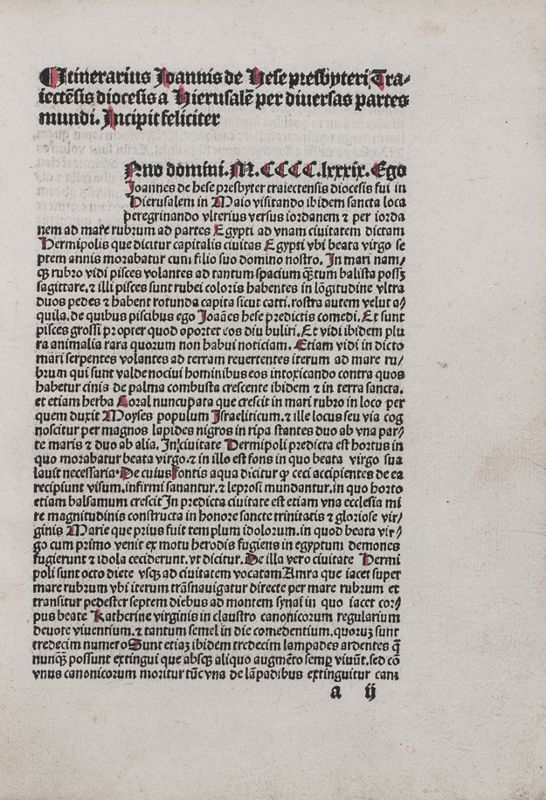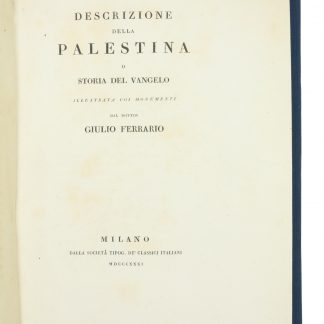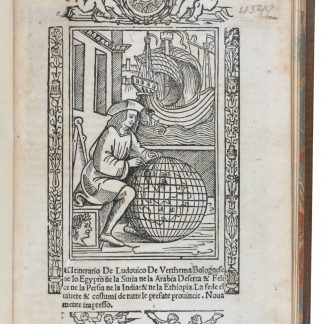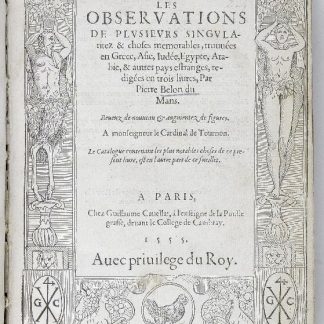[VERKAUFT]
Dieses Stück ist bereits verkauft. Am Ankauf eines gleichwertigen Exemplars bzw. von Stücken ähnlicher Bedeutung sind wir immer interessiert.
Post-incunabular edition of the travels of Sir John Mandeville, visiting Egypt and the lands of Prester John
Itinerarius Joannis de Hese presbyteri a Hierusalem describens dispositiones terrarum insularum montium et aquarum. Ac etiam quedam mirabilia et pericula per diversas partes mundi contingentia lucidissime enarrans. Tractatus de decem nationibus et sectis christianorum. Epistola Joannis soldani ad Pium papam secundum. Epistola responsoria Pii pape ad soldanum. Joannis presbyteri, maximi Indorum et Ethiopum christianorum imperatoris et patriarche, epistola ad Emanuelem, Rome gubernatorem, de ritu et moribus Indorum deque ejus potentia, divitiis et excellentia. Tractatus pulcherrimus de situ et dispositione regionum et insularum totius Indie, necnon de rerum mirabilium ac gentium diversitate.
4to. (38) pp., final blank leaf. Rubricated in red ink throughout, Modern full calf in period style.
A scarce and early edition of this important account of travels in the East. A medieval journey narrative comparable to the Travels of John Mandeville, the "Itinerarius" of Johannes Witte de Hese, a priest of Utrecht, is thought to date to c. 1389. The text circulated in manuscript in the fifteenth century, with the first printed edition being produced in Cologne ca 1490. This postincunabular edition was printed in 1504 in the Dutch city of Deventer by Jacques de Breda. During his eastward voyage Witte travels beyond Jerusalem, observing flying fish in the Red Sea en route to Egypt, then crosses the Sinai desert to visit St. Catherine's Monastery before returning to the Nile. Sailing from Damietta to the coast of Ethiopia, he is briefly taken captive by brigands before journeying onward to the kingdom of Prester John where he marvels at the extraordinary palace there. He also records a visit to the island housing the shrine of St. Thomas. Before returning to Jerusalem, Witte spends more than a year roaming the remotest parts of the seas. Unicorns, pygmies, Gog and Magog, and a whale the size of an island add to the exotic flavour of this seminal text in the development of European travel literature.
Nijhoff/Kronenberg 1217. Röhricht 1389B. Tobler 43.





